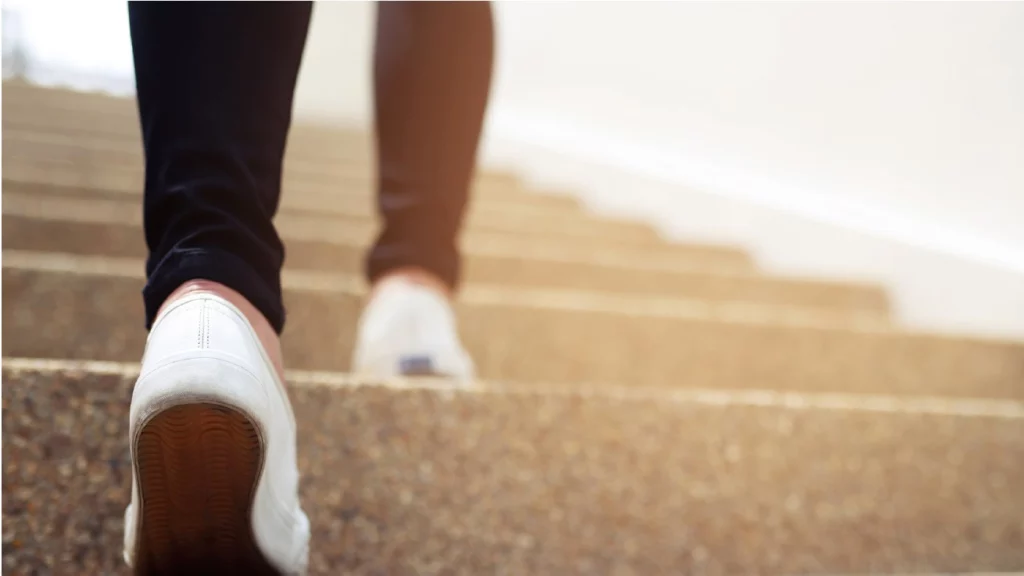Understanding and improving your post-stroke mobility
physiohealinghands

Starting your stroke recovery - what should you expect?
Experiencing a stroke is often a scary and stressful time, not just for the individual involved but for their wider family and friends. A stroke occurs when a blood clot blocks the flow of blood and oxygen to the brain, either for a short or extended period of time. The longer this clot is left without treatment, the more serious the injury to the brain can be. Injuries left by a stroke can often cause multiple, long-lasting problems, including post-stroke mobility, that require long-term intervention and treatment by medical and healthcare professionals.
For those whose stroke has been identified and treated early in the process, rehabilitation will begin as soon as possible – often in the hospital – to preserve and strengthen muscles and help the individual get back to as much independence as possible. The rehabilitation required will depend on the symptoms of the stroke and its severity. This period of time can often be the most difficult and stressful for the patient and the families involved, as patients become fully aware of the extent of their symptoms and become stressed at how they are no longer able to be independent or complete tasks they used to do with ease.
Rehabilitation interventions for stroke patients
Stroke patients will find a wide range of rehabilitation services offered to them as part of their road to the recovery journey. Below are just some of the most common interventions that are required for post-stroke patients.
Speech Therapy
– often, stroke can affect our ability to speak. A speech therapist will work to improve this as much as possible.
Occupational Therapy
– after a stroke, we can lose our fine motor skills. An occupational therapist works to bring those motor skills back to a functional level.
Physiotherapy
– post-stroke mobility can often differ from mobility prior to the stroke. A physio will help to improve strength and balance in our bodies.
Psychological support
– a stroke can be a damaging time emotionally and mentally. Psychological support is often needed to cope with the event and its after-effects.
When should your post-stroke mobility rehabilitation begin?
In most cases, patients who are having or who have had a stroke will be admitted to the hospital for diagnosis and treatment. Once the blood clot has gone, medical professionals will then start to assess the symptoms and injuries caused by the stroke. Time is of the essence to reduce the impact a stroke will have on the quality of life and abilities of the patient, and therefore, rehabilitation will begin as soon as possible, often starting in the hospital and continuing in the home once the patient has been discharged.
In many cases, post-stroke mobility will differ from pre-stroke mobility. This is often because a stroke can have a lasting effect on our muscles and joints, causing them to lose strength and function. It is the role of a healthcare professional, often a physiotherapist, to work with a stroke patient to identify challenging areas and work on a plan to rehabilitate the patient and improve their mobility. Depending on the seriousness of the stroke and the level of damage it left behind, this will often impact how long an individual will be working with a physiotherapist.
How will your post-stroke mobility differ from before?
Unfortunately, although this is something often asked by stroke sufferers and their loved ones, it is an almost impossible question to answer because each case is different and is handled differently. In order to get mobility back to a great level of function, it’s important to start rehabilitation with a physiotherapist as soon as possible to improve muscle function and strength. Independent walking is the main goal of most patients, and this is completely understandable. It is evidenced that those patients who are able to develop partial movement against gravity will go on to progress to single steps and multiple steps. This action may, however, be with the support of a cane or walking stick.
A physiotherapist works closely with patients to identify their challenges and understand the goals they would like to work towards. Creating a tailored physiotherapy plan means both physio and client have some tangible to work with on a daily, weekly and eventually monthly basis which can often be important – particularly for the mental health and wellbeing of the client. A physio doesn’t just work to improve muscle strength; they focus on the root cause of the problem and aim to improve strength, ability and balance over a long period of time by working closely with the client on stretches, exercises, massage and various types of therapy to stimulate the muscles and joints and improve their abilities.
This may also interest you:
Physio Healing Hands supports your stroke rehabilitation.
If you or a loved one has recently been diagnosed with a stroke and you are looking for support with your post-stroke mobility rehabilitation, Physio Healing Hands is your local stroke specialist physiotherapist. Much of our experience stems from working closely with rehabilitation patients at The Royal Bucks Hospital, based in Buckinghamshire, along with other reputation private and public facilities aimed at supporting patients to gain as much independence as possible after life-changing events have occurred.
For more information on our post-stroke mobility services or to find out how else we can help you, take a look at our treatments page or get in contact with a friendly member of our team. We look forward to working with you soon.
Our Newsletter
Dig deeper into physiotherapy, health, and related topics that you care about by signing up for our newsletter.
